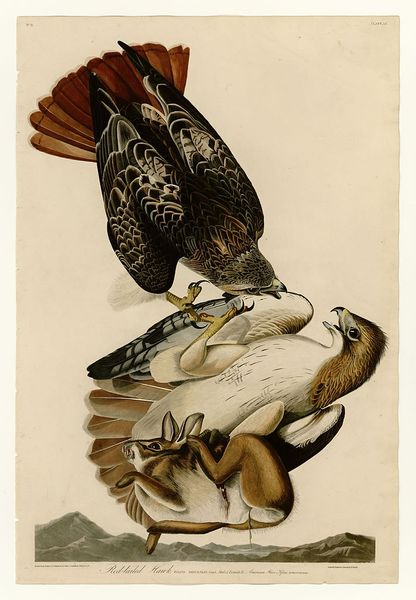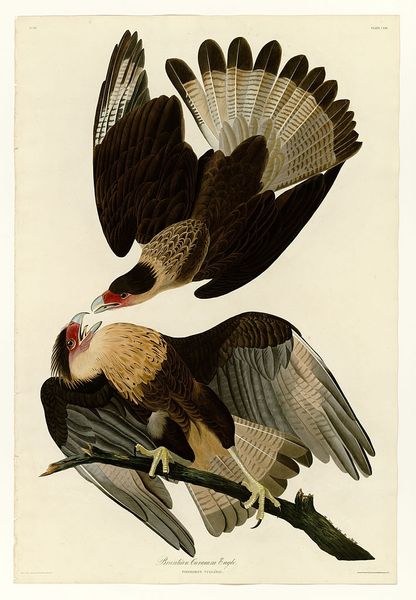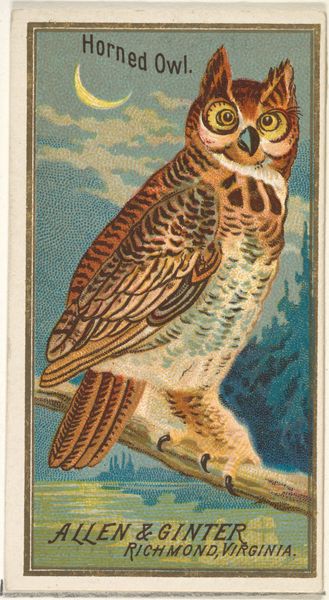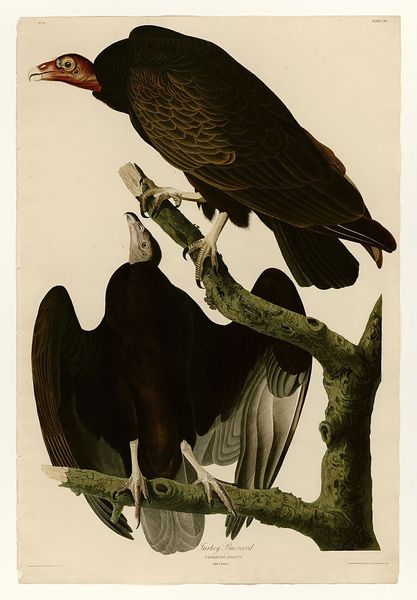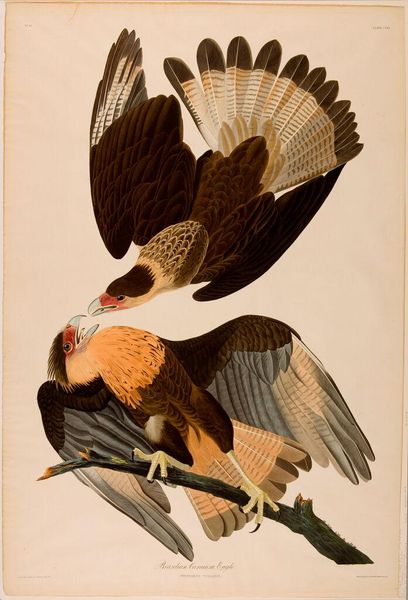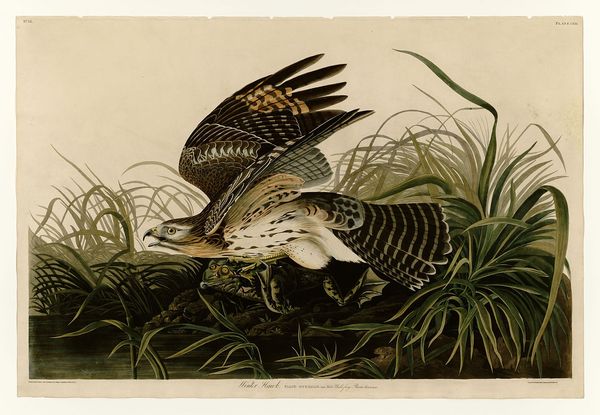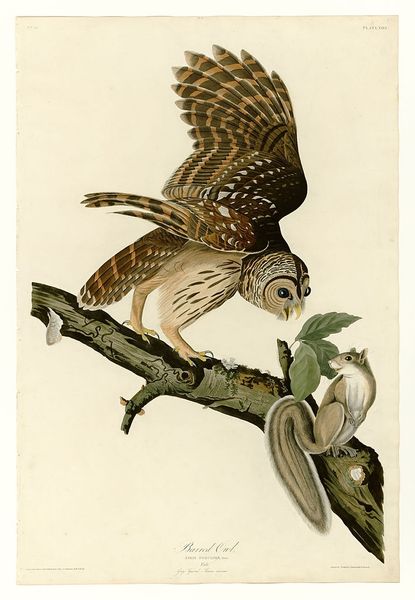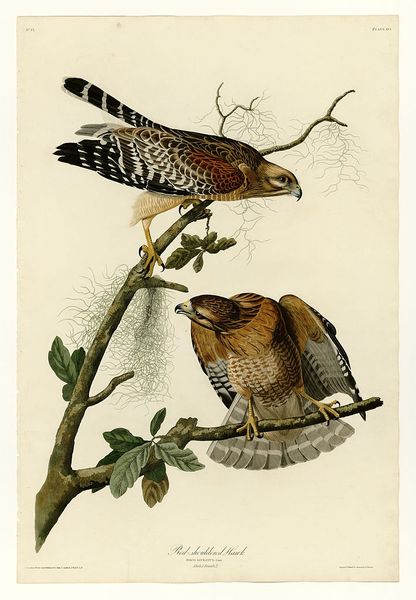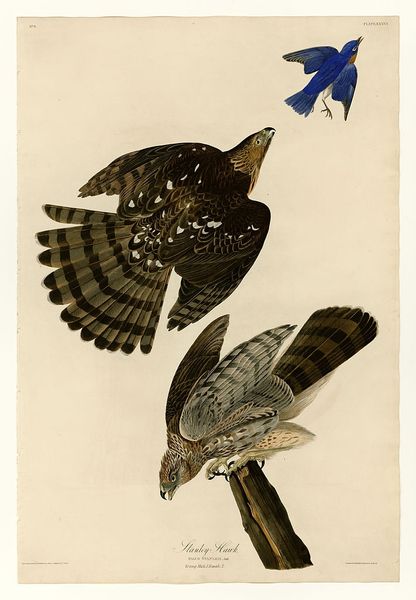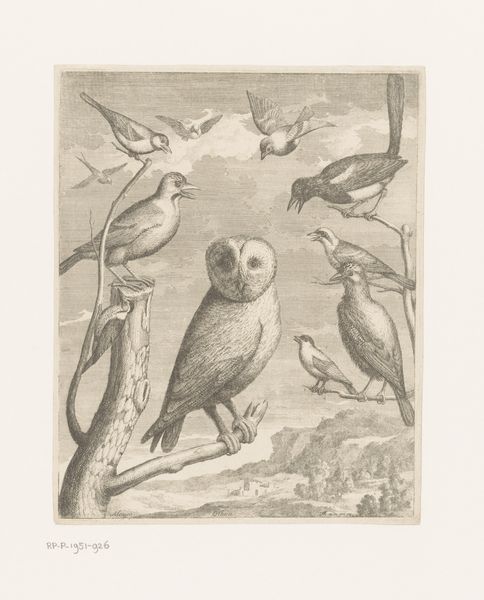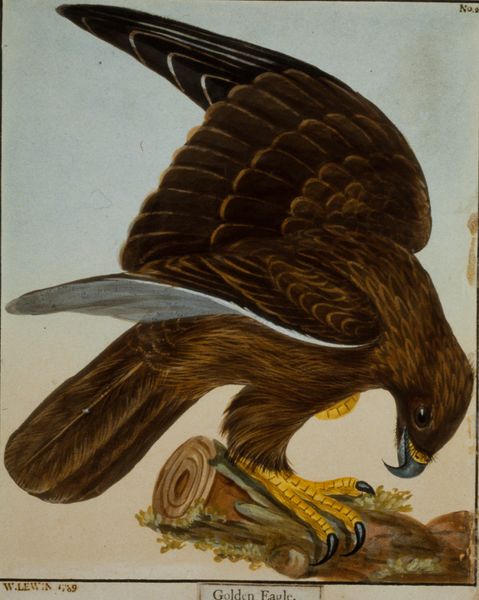
painting, watercolor
#
portrait
#
painting
#
landscape
#
bird
#
watercolor
#
romanticism
#
naturalism
Copyright: Public domain
John James Audubon made this watercolor, pastel, and graphite artwork called "Plate 171 Barn Owl" sometime between 1827 and 1838. Here, Audubon presents us with a tableau of American wildlife, rendered with scientific precision and dramatic flair. But more than just a pretty picture, it reflects the cultural values of a young nation. Consider the context: Audubon was seeking to document all the birds of America, driven by the spirit of discovery and the belief that nature was a resource to be understood and, yes, conquered. The image, in its detail, implies a narrative of dominance, showing owls, predators in their domain. Understanding Audubon's place in the cultural landscape requires a look into the institutions that supported him, and the social norms that shaped his vision. His work contributed to the scientific understanding of the natural world but it also mirrored the era’s complex relationship with nature. The historian's role is to peel back these layers, consulting field notes, letters, and scientific publications. In doing so, we reveal the intricate web of meaning that art carries within it.
Comments
No comments
Be the first to comment and join the conversation on the ultimate creative platform.
